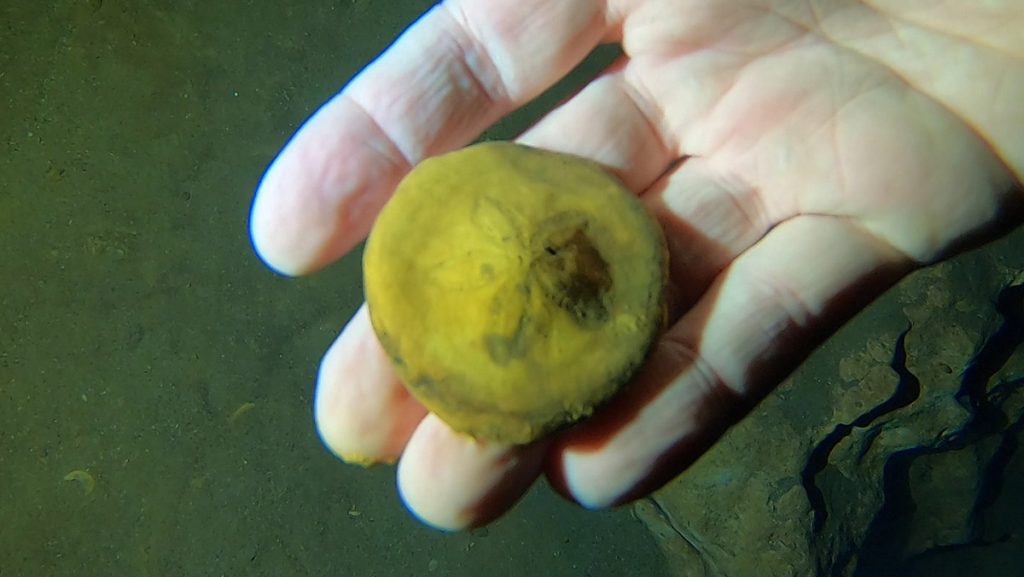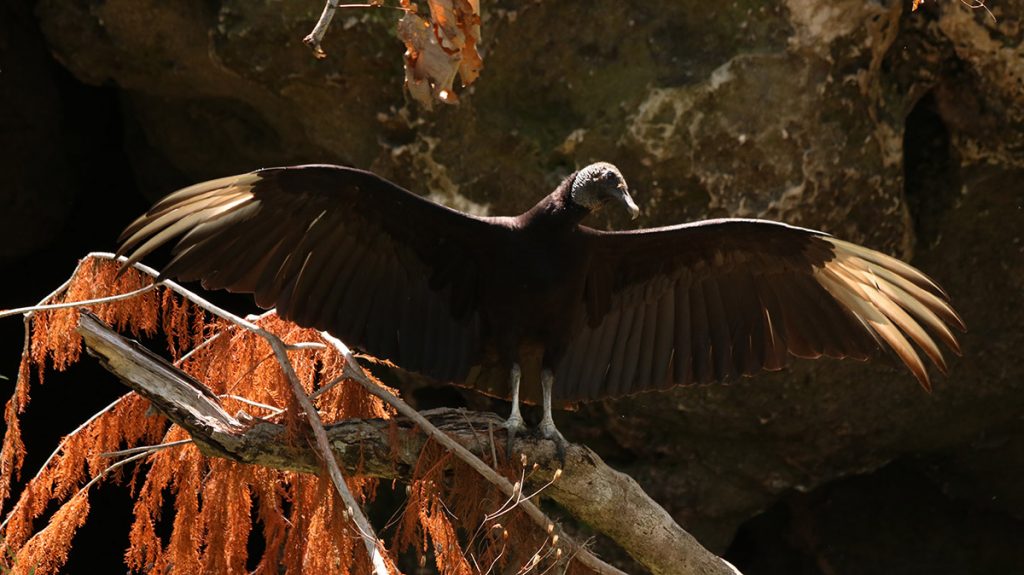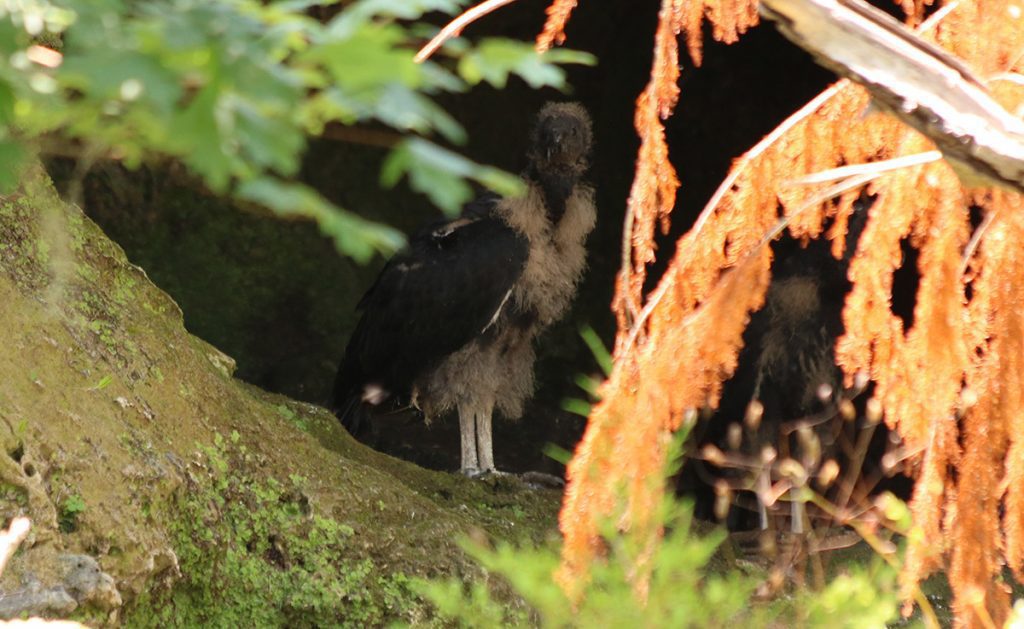Beneath scenic Merritt’s Mill Pond, we learn that there is more alive in the waters beneath Florida than one might think. Researchers at Florida A&M University are discovering new species of cave crustaceans, and redefining biodiversity in the Floridan Aquifer. Thanks to Andrew Dow for shooting the underwater footage in the video, and to Dr. Tom Sawicki for providing images of the animals covered in the story.
[embedyt] https://www.youtube.com/watch?v=xv1pbw7EaHE[/embedyt]Andrew Cannizzaro aims his net at the area around a dead crawfish. “We’ll find the highest numbers right around there,” he says. After scraping the sediment around the claw, he pulls it up and takes a look. We see what look like several dozen insects flopping around. If we were to take these creatures and put them under a microscope, however, we’d see something more closely resembling a tiny, tiny shrimp. These are amphipods, small crustaceans present in all of our local waterways, and sometimes by the million.
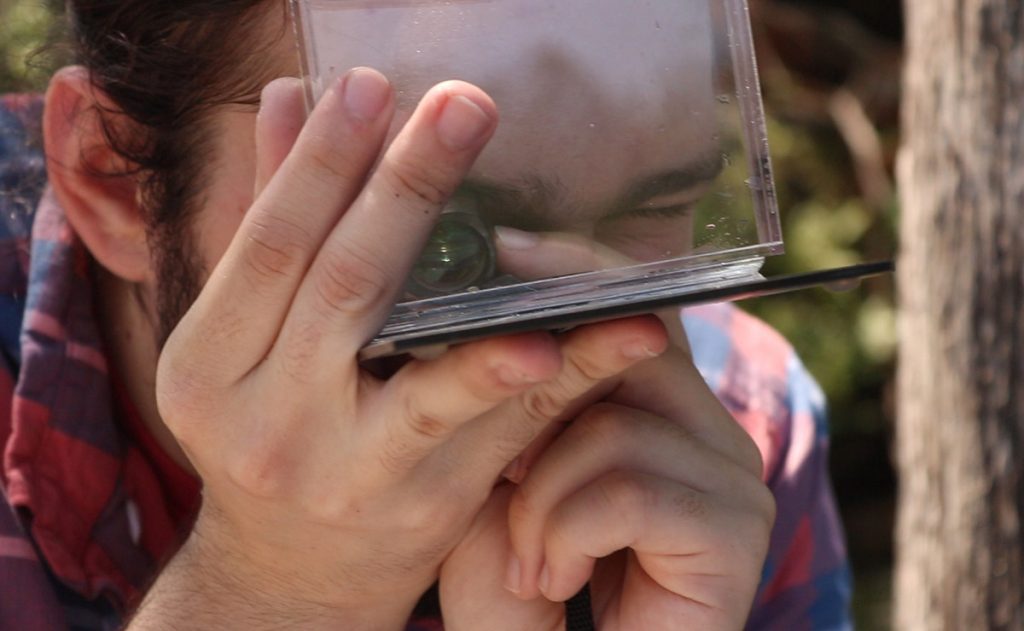
We’re on a platform in Merritt’s Mill Pond near Marianna. Six or seven springs here, highlighted by Jackson Big Blue, attract cave divers from around the world. The pond was created by damming their spring run; I kayaked the cypress lined reservoir on my last visit here. On the other side of the dam flows Spring Creek, a popular tubing destination that flows into the Chipola River. This is one of Jackson County’s favorite outdoor playgrounds.
Today, though, we’re here for science.
Andrew’s faculty advisor is collecting amphipods and isopods in a cave below us. The cave is called Hole in the Wall, taking its name from an above ground cave from which a vulture and her two chicks watch us with interest. Here in Jackson County, Tom and Andrew have recently discovered a new species of cave amphipod, Crangonyx manubrium. It’s one of a string of discoveries made by the Groundwater Biodiversity Lab* at Florida A&M University that are rewriting what we know about life in the Floridan Aquifer.
*The name of the lab has changed since we recorded the interview. In the video, Dr. Tom Sawicki refers to it as the Groundwater Evolution, Ecology, and Biodiversity Lab.

Mother vulture spreads her wings in front a cave containing her chicks. 
Two vulture chicks sit in a cave above Merritt’s Mill Pond.
Working, and Living, in a Cave Environment
Inside the cave, Dr. Tom Sawicki doesn’t have the luxury of netting fifty or more creatures at a time. Instead, he sucks them into a small bottle as they float by in the water column. It’s a precision job, made more challenging by the weight of scuba tanks, and with the limited visibility provided by spotlights.
Andrew and Tom are finding creatures at opposite ends of the evolutionary spectrum. Both in the cave and on the surface of the pond bed, they are finding amphipods in the Crangonyx genus. The ancestors of the cave Crangonyx were surface dwellers who, at some distant point in the past, found themselves in this dark, food-limited environment. Over hundreds of thousands- possibly millions- of years, successive generations began to lose their eyes, and their color. Eventually, the blind, all white Crangonyx became a distinct species. We’ll cover this process in more depth later in this post.
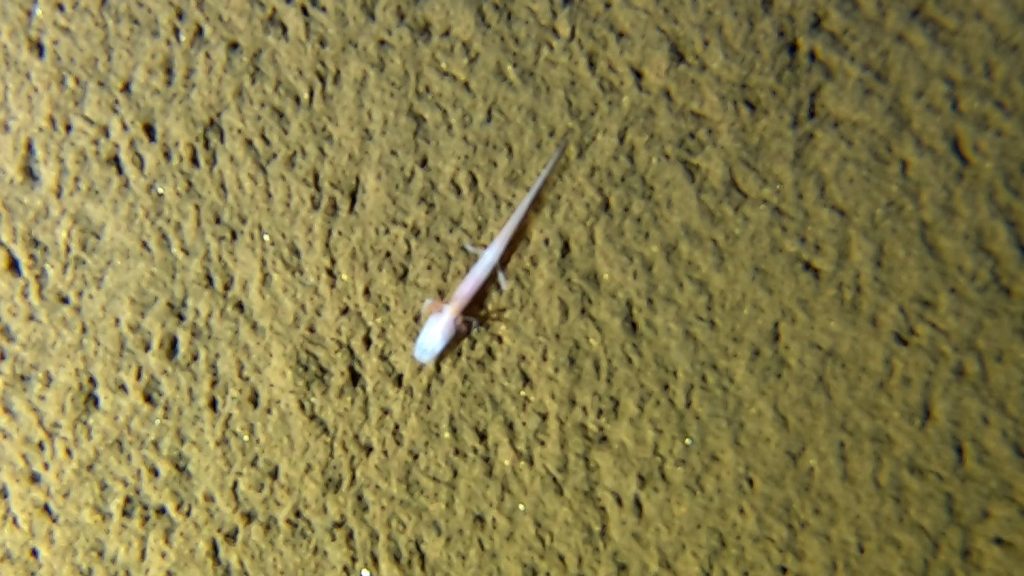
During Tom’s dive, he sees other stygomorphic- or cave adapted- creatures. As he tells us, the Georgia cave salamander (Eurycea wallacei) is the only cave dwelling vertebrate in the Florida panhandle. A likely predator of the Georgia cave salamander is the Apalachicola cave crayfish, Cambarus cryptodytes. When one of these crayfish dies, cave Crangonyx will feed on its carcass- just like the surface Crangonyx feed on the crayfish by the platform above.
Until recently, there were no known cave-adapted amphipods in this part of the Floridan Aquifer, west of the Apalachicola River. In 1963, Dr. Ed Bousfield identified Crangonyx floridanus in a Jackson County cave. But that’s a surface species.
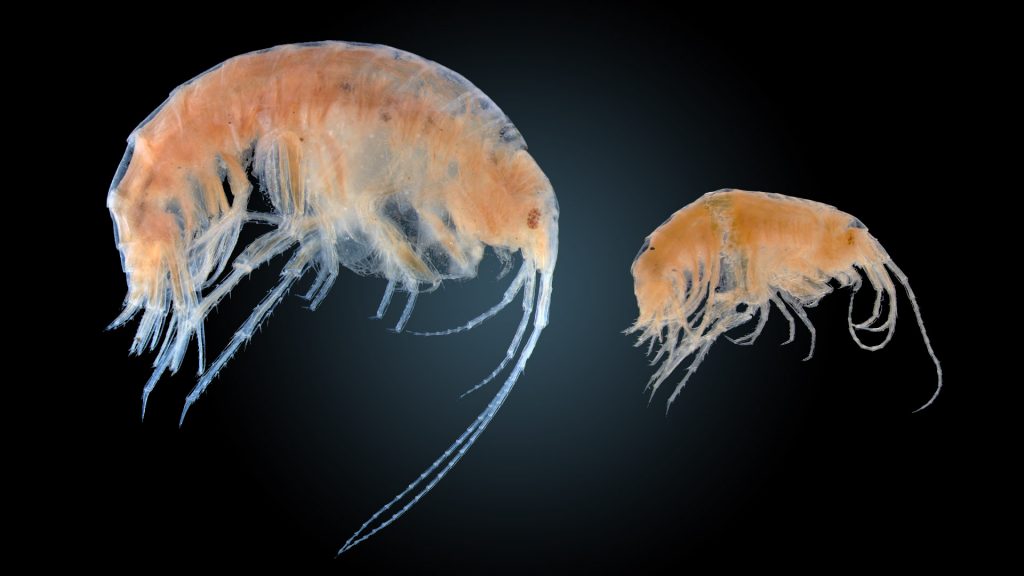
Looking back over fifty years, Tom wondered if this animal was correctly identified. Little mysteries like these draw Tom to these caves. Years ago, a bigger mystery drew Tom to Florida.
Why aren’t there more cave critters in the Floridan Aquifer?
“When I was in grad school, I had a lab mate that was working on the genus Crangonyx,” Tom says. His lab mate had created a map of the two species found in Florida caves: Crangonyx hobbsi and Crangonyx grandimanus. Looking at it, Tom wondered why there weren’t more than two in the Floridan Aquifer, one of the largest aquifers in the country.
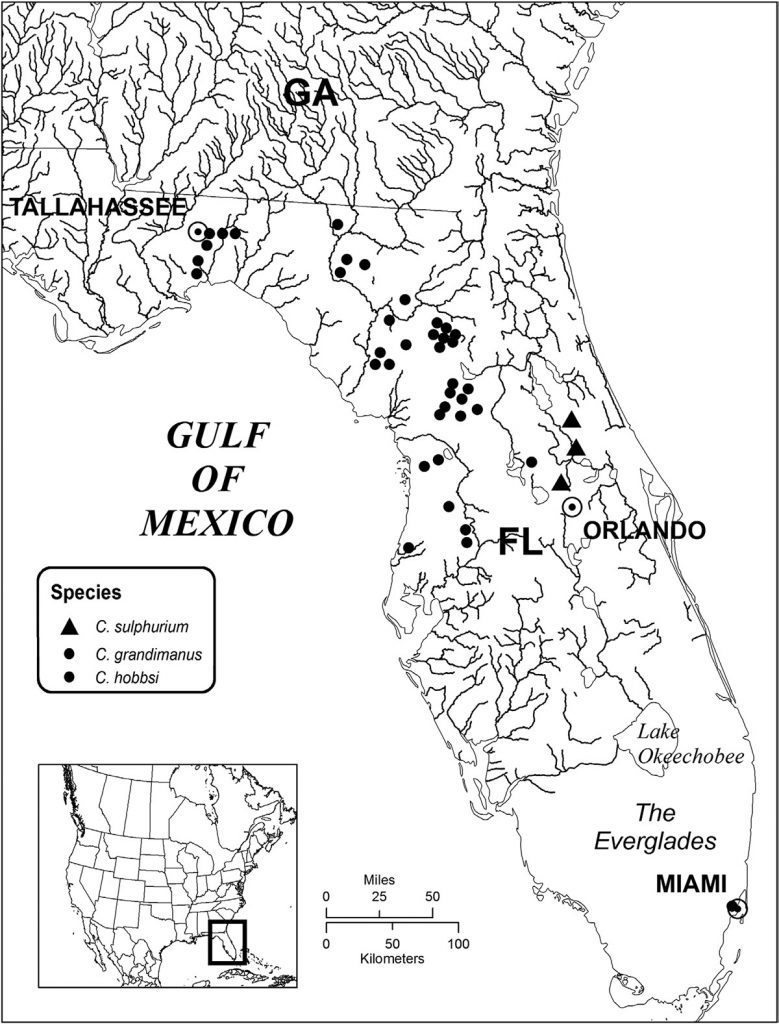
For comparison, the Edwards/ Trinity Aquifer in Texas covers 3,237 square kilometers, and has over twenty described species of amphipod. Likewise, there are over twenty in the Valley and Ridge Aquifer system that underlies the Appalachian Mountains and Piedmont Plateau in Virginia.
The Floridan Aquifer covers 260,000 square kilometers, and it has two.
It’s a curious lack of biodiversity. But what might be more interesting is that the species are so widespread. The map shows them in several individual caves from Tallahassee all the way to Miami. Lacking fully functional eyes, they’d be easy prey in well lit waters. So they couldn’t leave the caves and swim to new ones.
The diversity in Texas and Virginia is higher in part because animals are endemic to smaller cave systems. Say there was a species of Crangonyx living in several bodies of surface water. If populations of that species ended up in two different caves, over time, each might evolve into a cave dwelling Crangonyx. But isolated from each other, they’d evolve into two different species.
The low diversity of the Floridan Aquifer, and large range of the species within it, invited a closer look.
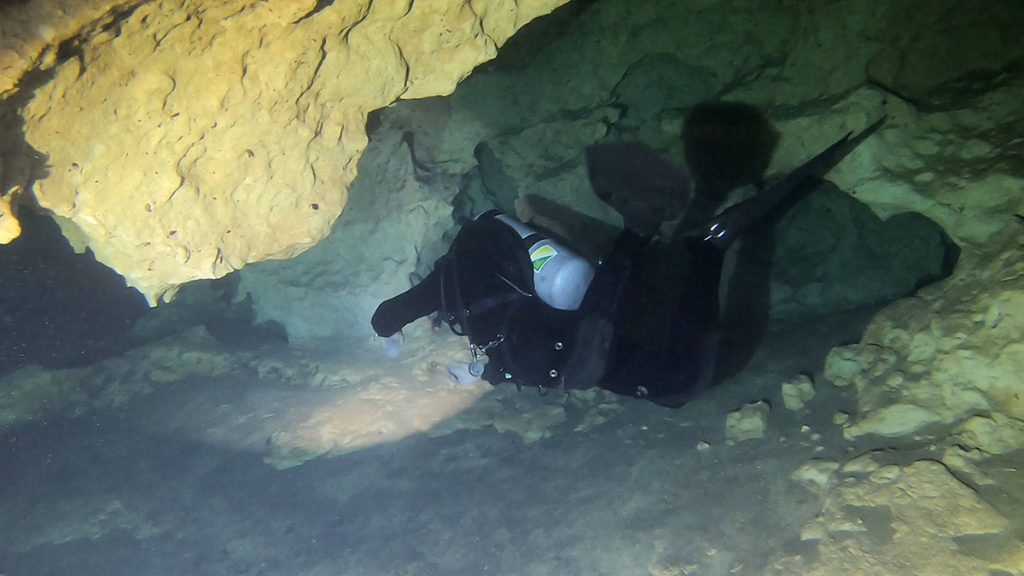
The Biological Dye Trace
Maybe the distribution of these cave dwellers is telling us something about the aquifer itself.
“Cave divers are often used to this idea of a dye trace,” Tom says, “where you put dye in one cave, and see where it comes out… So you can think of this as a whole aquifer dye trace, using the genes of these organisms as the ‘dye.'”
There are a variety of ways in which water moves through the limestone of the Floridan Aquifer. The limestone itself holds water like a rocky sponge. That water also dissolves the limestone, creating openings where water flows more freely. Some of those openings are caves big enough for people to swim, and cave divers have mapped many of those. But most of the 260,000 square miles of the aquifer is inaccessible. Dye traces can help us make connections.
Because amphipods and isopods are so small, they can serve the same purpose as dye. Looking at that distribution map, you can imagine these little critters moving many miles through the little cracks and crevices between caves. There might be little Crangonyx swimming underneath you right now.
It’s a fun idea, this statewide network of tiny tunnels connecting large caves. But, like Crangonyx floridanus, these cave creatures were mapped decades ago. Researchers now have more advanced tools for looking at small creatures. And it may turn out that what had once looked like only two species, might be many more.
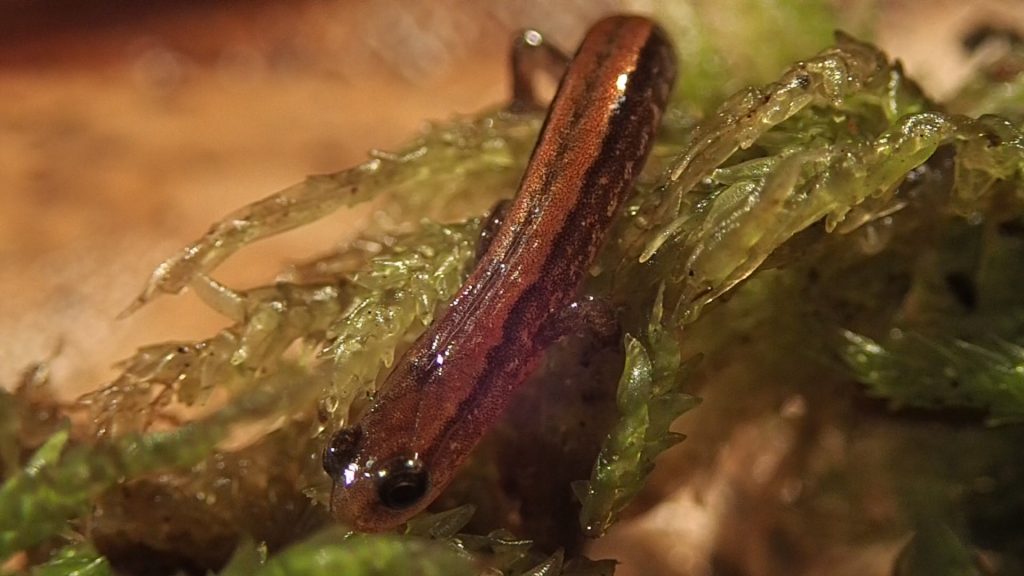
Cryptic Species | Tiny Critters in Disguise
A couple of years ago, Bruce Means led me into a swamp a few miles south of Merritt’s Mill Pond. Along the edge of the swamp, a seepage slope fed cool water to the muck between cypress trees. After wading trough the swamp, Bruce methodically picked through sphagnum moss on the slope. He was looking for a newly described species: Eurycea hillisi, Hillis’s dwarf salamander.
What he and his colleagues had discovered was actually a new species complex. By taking a close look, and using modern genetic testing, they had seen that what had once been described as Eurycea quadrigitata was in fact five different species. It’s not uncommon that small, similar looking creatures get lumped together like this.
Tom wondered if the same thing wasn’t happening in the Floridan Aquifer.
“The idea of the project at first was that there could be what we call cryptic species.” Tom says. “That is, organisms that look the same… but if you look at them genetically, they’re actually distinct.”
So was that actually Crangonyx floridanus in a Jackson County cave? Were there only two cave Crangonyx species in the Floridan Aquifer? What did Tom and his lab find?
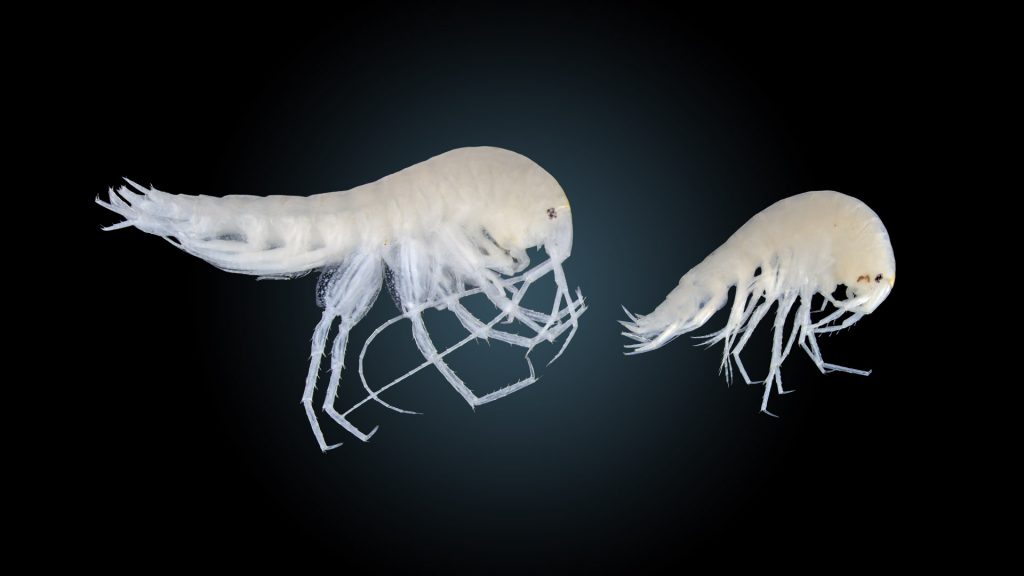
Meet Crangonyx manubrium
Let’s start at Merritt’s Mill Pond.
“So when I started collected over in the panhandle of Florida,” Tom says, “diving in these caves in Jackson County, I wasn’t surprised to find Crangonyx floridanus. I was expecting to find it.”
What he was finding matched the specimens Bousfield had found over 50 years earlier.
“But when we began looking at these things in detail, particularly not just morphologically, but also molecularly, it became very clear very quickly that what Bousfield was calling Crangonyx floridanus up in Jackson County, shouldn’t have been.”
They look at their specimens in a couple of different ways.
One is genetically. But first, they examine them morphologically. That is, they look at the shape of the animal, and its different body parts. They measure the body length, the antennae, legs, and so on. They make detailed diagrams of every small part of this small animal’s body, from its lips to its mandibles, legs, etc. In the video, you can see Andrew looking at a Crangonyx under a microscope. You can see how small the animal is. Here are illustrations he made from this kind of close examination:
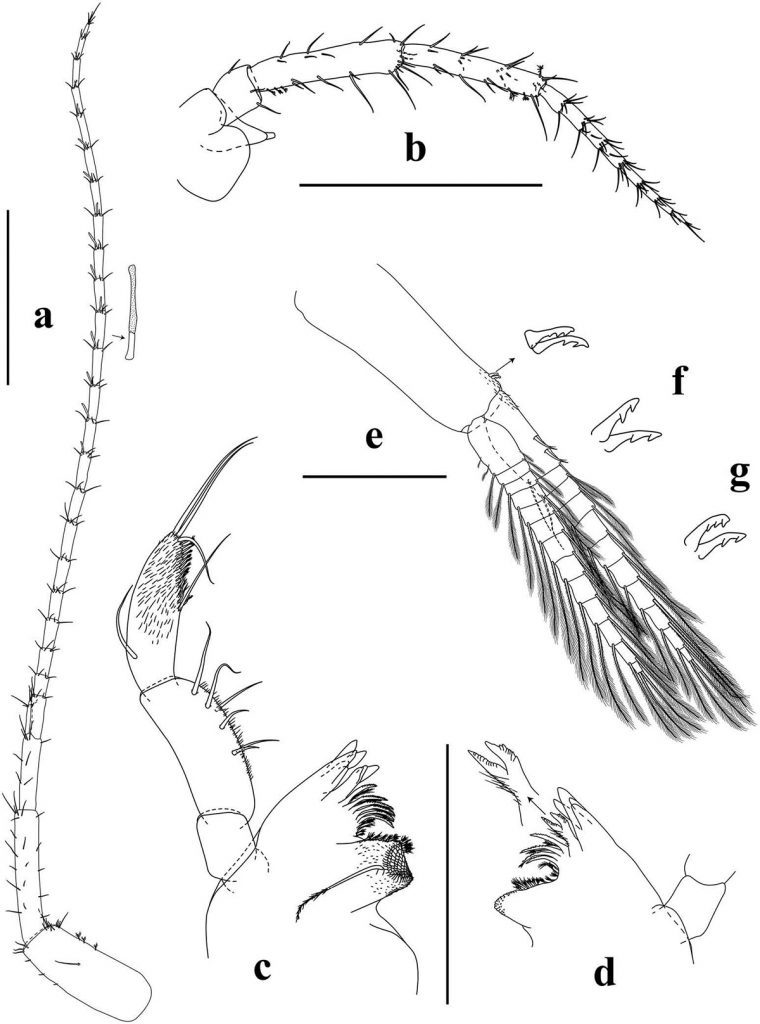
Morphologically, and genetically, Andrew and Tom saw that what had been called floridanus in this cave did not match floridanus collected in other, surface water locations. They called their new find Crangonyx manubrium.
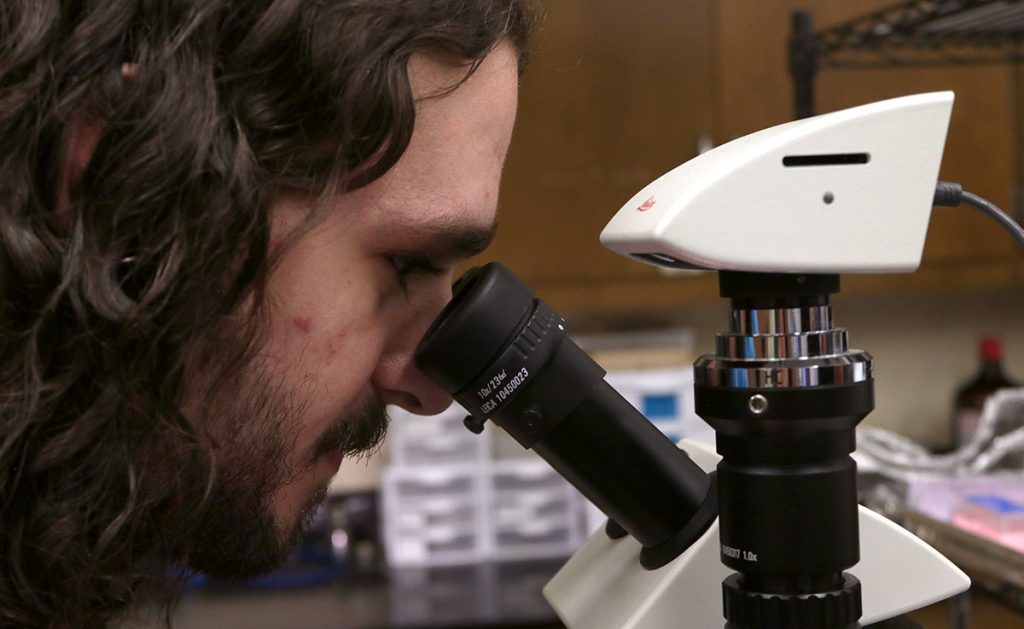
The Floridan Aquifer is Looking More Biodiverse
This recent discovery is not the first new cave Crangonyx Tom’s lab has discovered in Florida, but it is the first in the panhandle. That’s where it gets its name: manubrium is Latin for “handle.”
If you look back at that first Crangonyx “dye trace” map, you see that hobbsi and grandimanus stop east of the Apalachicola River. Hard clay formations along the river effectively cut the panhandle caves off from the peninsular caves.
And what of Tom’s investigations in this larger, seemingly more connected part of the aquifer? In 2017, he and his colleagues described Crangonyx sulphurium, a new species found in three central Florida caves (see map above). They’ve also discovered a new isopod species in Hole in the Wall, Mexistenasellus floridensis. And more new descriptions are on the way. The Floridan Aquifer is turning out to be more diverse than it seemed when Tom was in grad school.
But back to those first two Crangonyx species. Are they only two, or possibly a complex of multiple species? To answer that question, Tom dives into their DNA.

Breaking Down the Crangonyx “Dye Trace”
The short answer is yes, C. hobbsi and C. grandimanus were found in most of the range Tom first saw on his lab mate’s map. The exception is Miami. Tom and his colleagues have not found any Crangonyx in the Biscayne Aquifer.
“We’re worried about local extirpation,” Tom says, “in other words, that locally, they’re gone.” Maybe saltwater intrusion or pollution has killed off that population. Or, as Tom says, it might just be that they haven’t found it yet. Have we mentioned how small they are?
As for the rest of the state, genetic analysis has given us a little more to chew on regarding the connectedness of the Aquifer.
“What we are discovering is that the caves in the northern part of the state, from Tallahassee over to say, Lake City area, they are not connected, at least biologically, with the caves in the southern part of the state.” In other words, they’re the same species, but the “Tallahassee to Lake City” group hasn’t interbred with the “Gainesville to Tampa” group, at least not in some time.
Even within each group, they’re finding sub-populations that have become genetically distinct from one another. “There’s some discontinuity there, suggesting potential restriction of gene flow.”
There could be any number of reasons that these populations have become isolated over time. A karst landscape such as in the Floridan Aquifer is always changing, even if it’s slowly over geologic time. Water dissolves limestone and makes a large opening. Later, the large opening may no longer support the weight of the land above it, and it collapses. During the last ice age, there was less water flowing out of our springs from the aquifer, and so we can imagine water was moving differently below ground. There are any number of reasons why gene flow would become restricted in the aquifer.
That’s one of the things I love about science. As a question gets answered, new questions pop up.
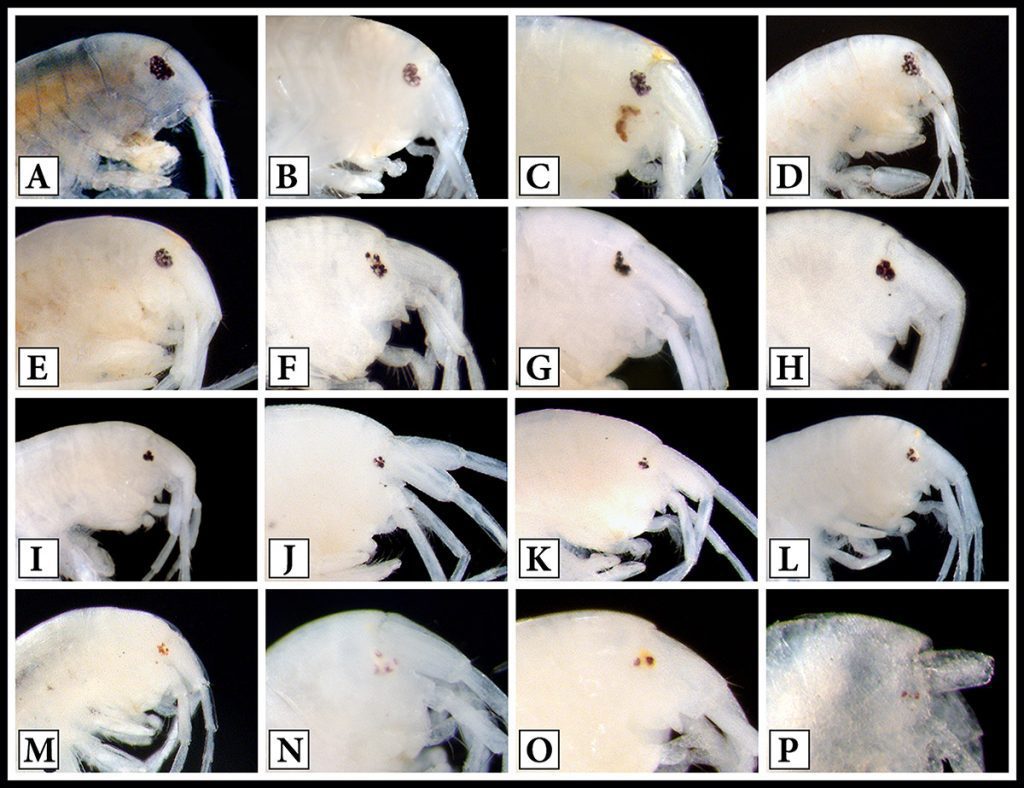
How do Cave Critters Evolve?
Intuitively, it makes sense that cave critters would lose their eyes. After all, they don’t need them. But animals don’t evolve simply because they don’t need something. They evolve when a genetic trait (bigger claws!) gives them an advantage, allowing them to better survive and pass on those genes than animals of their species that lack the trait. So what is the competitive advantage of losing eyes?
“This is a question that goes back to Darwin himself,” Tom says. “Darwin wrote about cave organisms and wondered how natural selection could result in the loss of eyes. Because he didn’t see any selective advantage to losing the eyes in a cave.”
Recent research might shed some light on the process.
“At least with vertebrates, it’s more expensive to maintain an eye in the dark, than it is in the light. And that is because you have to have an electrical potential across the cells that are in the retina. And in the dark, you’re maintaining that all the time. That takes energy.”
As you can see in the video, these caves aren’t full of plants and large animals. In other words, it doesn’t have an abundance of food. A tiny critter trying to make its way here needs to save energy for hunting that little bit of food.
“So if you’re born with a mutation where even part of your eye doesn’t function, that means you’re using less energy.” Another advantageous mutation would result in longer antennae, an important sensory organ in the dark. Also, a smaller animal would use less energy.
Over thousands of generations, these mutated genes outcompete the genes of the original animal. Eventually, there’s an animal with enough different genes that it can no longer breed with the original. It’s a new species.
Of course, this process is happening all around us. It’s the extreme nature of the cave environment that makes it easier to see, at a glance, how the process works. All you have to do is look at two groups of animals, separated by a few hundred yards at scenic Merritt’s Mill Pond.
